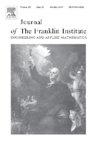一种新的基于三维增强混沌映射和DNA计算模型的图像加密方案
IF 4.2
3区 计算机科学
Q2 AUTOMATION & CONTROL SYSTEMS
Journal of The Franklin Institute-engineering and Applied Mathematics
Pub Date : 2025-06-16
DOI:10.1016/j.jfranklin.2025.107790
引用次数: 0
摘要
随着信息共享和存储的日益重要,图像加密已成为确保敏感图像数据保密性和完整性的关键方法。本文提出了一种将DNA编码与三维增强逻辑分数正弦(3D-ELFS)超混沌系统相结合的对称图像加密算法。3D-ELFS的性能通过严格的测试验证,如分岔图,李雅普诺夫指数,排列熵和0-1测试。此外,提出了一种基于自反转函数的DNA计算模型,由3D-ELFS生成的混沌序列确定8个编码规则和7个设计操作。另外,DNA扩散操作次数由扩散因子数控制。经过DNA级排列和扩散,得到密文图像。通过相关分析、直方图分析、信息熵分析以及NPCR、UACI、MSE等度量值分析,证明了所提出的加密算法对不同攻击方式具有鲁棒性和安全性。实验结果表明,该算法具有较高的安全性和实用性。本文章由计算机程序翻译,如有差异,请以英文原文为准。
A novel image encryption scheme based on a 3D enhanced chaotic map and DNA computing model
With the increasing importance of information sharing and storage, image encryption has become a critical method to ensure the confidentiality and integrity of sensitive image data. In this paper, a novel symmetric image encryption algorithm is presented by combining DNA encoding and a proposed three-dimensional enhanced logistic-fraction-sine (3D-ELFS) hyper-chaotic system. The performance of 3D-ELFS is verified through rigorous tests, such as bifurcation diagrams, Lyapunov exponent, permutation entropy, and 0-1 test. In addition, a DNA computing model based on the self-inverting function is proposed, the 8 encoding rules and 7 designed operations are determined by chaotic sequences generated with 3D-ELFS. In addition, the operation number of DNA diffusion is controlled with number of diffusion (ND) factors. After DNA level permutation and diffusion, the ciphertext image is obtained. Through correlation analysis, histogram analysis, information entropy, as well as analysis of metric values such as NPCR, UACI and MSE, it is proven that the proposed encryption algorithm exhibits robustness and security against different attack methods. Experimental results demonstrate the algorithm has high security and usability in practical application scenarios.
求助全文
通过发布文献求助,成功后即可免费获取论文全文。
去求助
来源期刊
CiteScore
7.30
自引率
14.60%
发文量
586
审稿时长
6.9 months
期刊介绍:
The Journal of The Franklin Institute has an established reputation for publishing high-quality papers in the field of engineering and applied mathematics. Its current focus is on control systems, complex networks and dynamic systems, signal processing and communications and their applications. All submitted papers are peer-reviewed. The Journal will publish original research papers and research review papers of substance. Papers and special focus issues are judged upon possible lasting value, which has been and continues to be the strength of the Journal of The Franklin Institute.

 求助内容:
求助内容: 应助结果提醒方式:
应助结果提醒方式:


